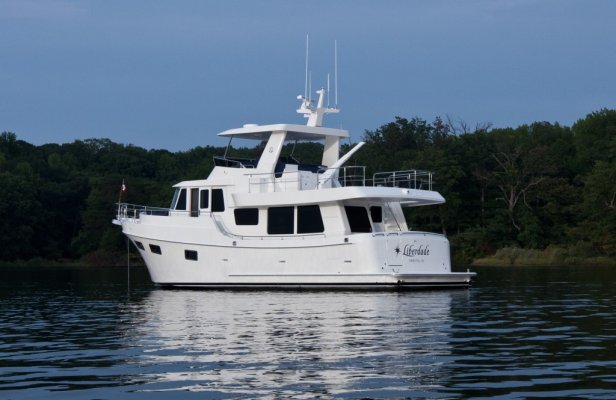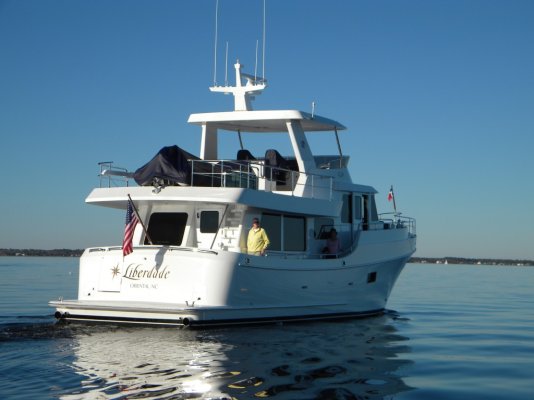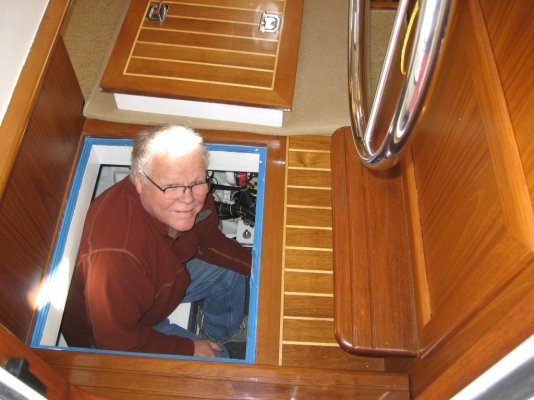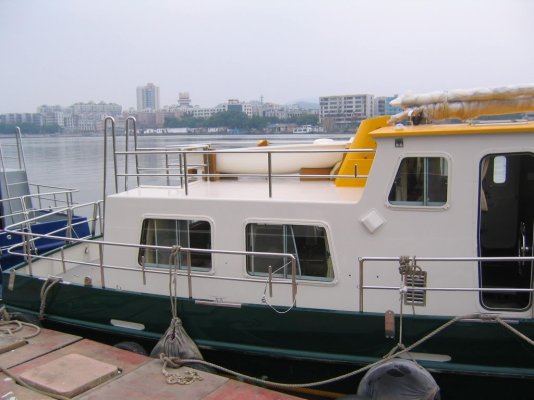Just Bob
Veteran Member
Several of you were a big help with some issues earlier in the year during the build process of our new Ocean Alexander 54 Trawler.* Well she's built and we've enjoyed getting to know her over the last few months.* A few things have come up now that we're using her and I'm trying to form a final a opinion a few issues, so there will be a few different posts under different subject headings.* The first is engine room temperature and (almost)/continuous*running of a genset.
*
We were surprised to get the boat with AC powered engine room exhaust fans - 240v no less.* This obviously means we have to run the genset to*ventilate the*ER.**The house/inverter batteries will keep the house systems running about 12 hours, so there is no need to run the genset during a normal days run, except*the ER temp climbs higher than John Deere said it should be, their*recomendation is 30 degrees above outside air temperature, well that can vary quite a bit depending on whether it's 40 or 80 outside, but none the less*I find I'm*running a genset just to run the fans to maintian that temperature delta.**
*
This is our first trawler and the first boat of this size.* Many I've spoken to have said*it is not unusual to run a genset continuously on a boat this size.*** I*installed two gensets, a 9kw and 15.5kw.* Is it someting I just need to get used to?
Thank you!
*
We were surprised to get the boat with AC powered engine room exhaust fans - 240v no less.* This obviously means we have to run the genset to*ventilate the*ER.**The house/inverter batteries will keep the house systems running about 12 hours, so there is no need to run the genset during a normal days run, except*the ER temp climbs higher than John Deere said it should be, their*recomendation is 30 degrees above outside air temperature, well that can vary quite a bit depending on whether it's 40 or 80 outside, but none the less*I find I'm*running a genset just to run the fans to maintian that temperature delta.**
*
This is our first trawler and the first boat of this size.* Many I've spoken to have said*it is not unusual to run a genset continuously on a boat this size.*** I*installed two gensets, a 9kw and 15.5kw.* Is it someting I just need to get used to?
Thank you!




